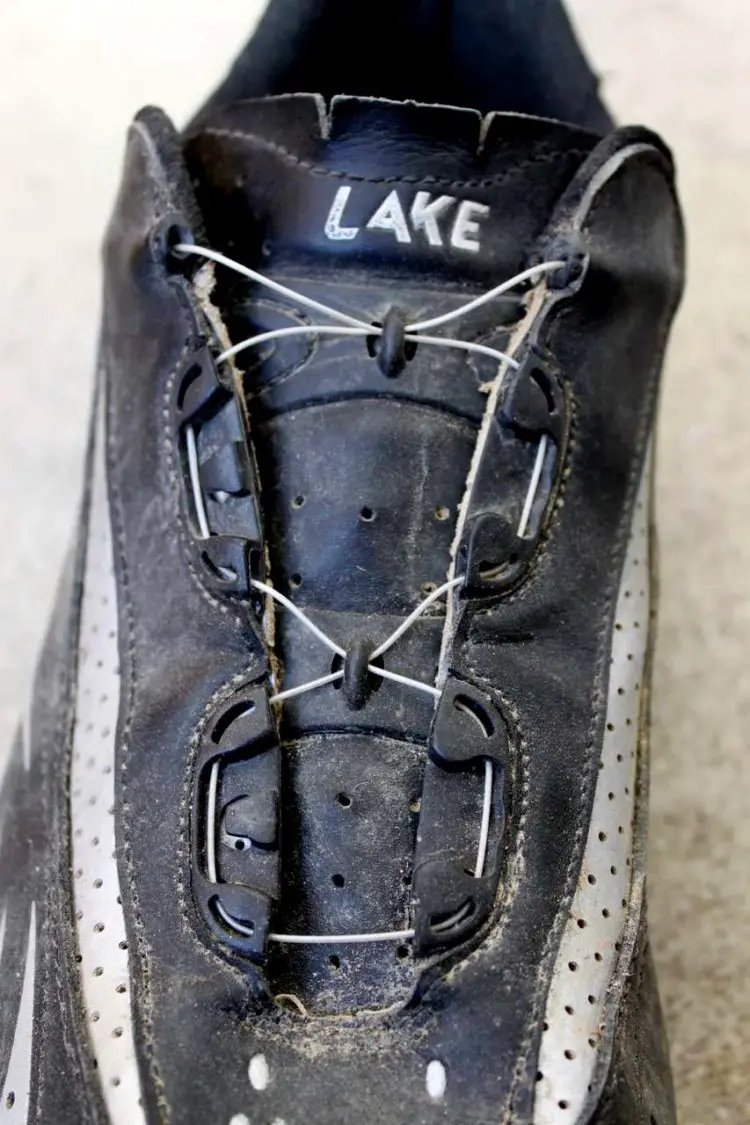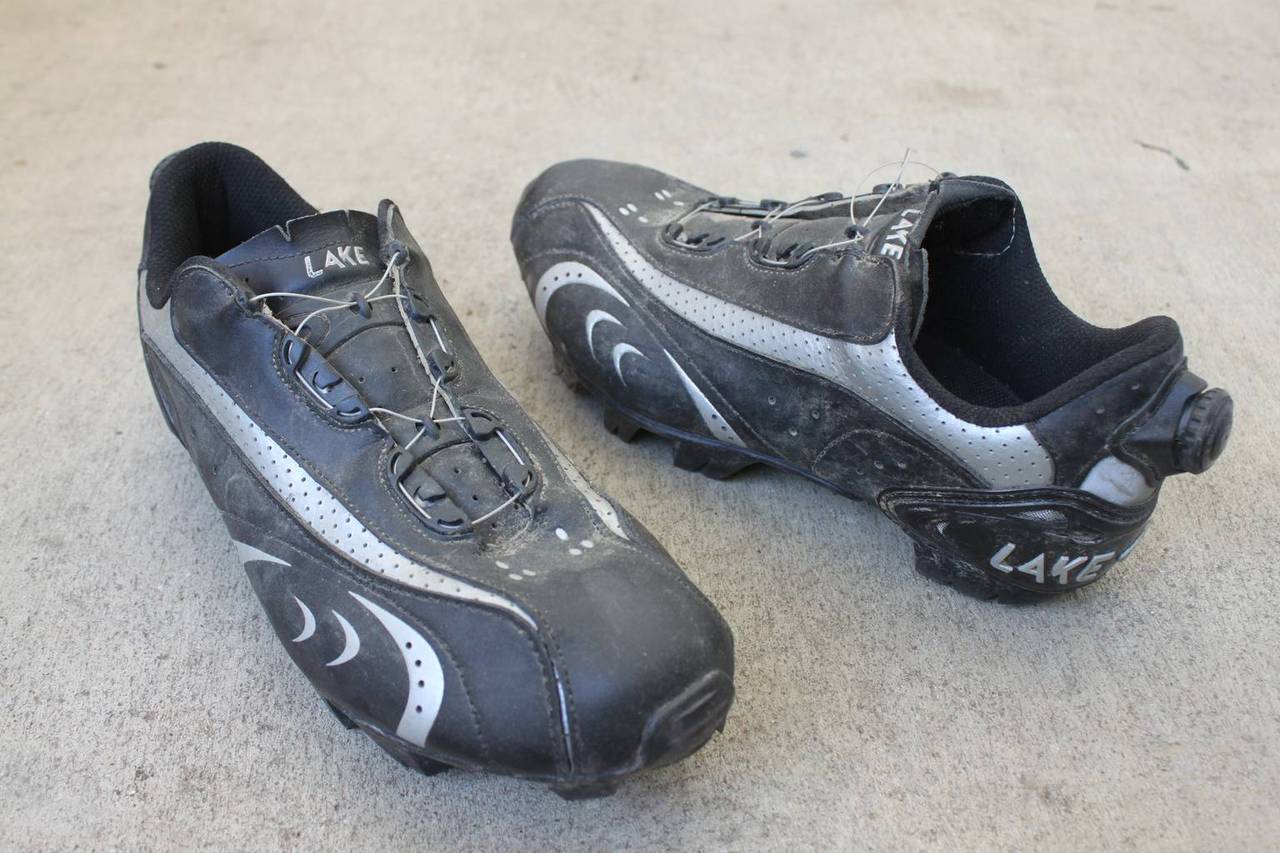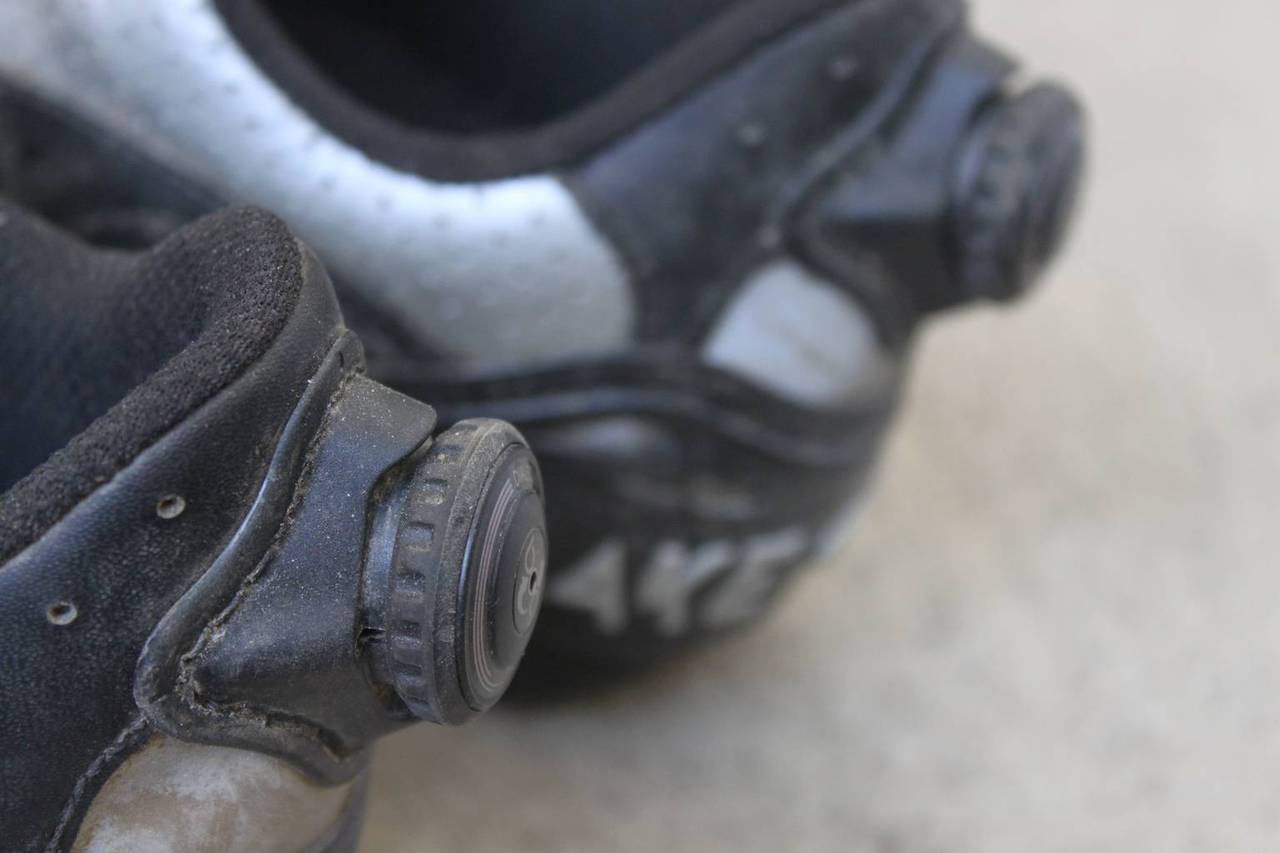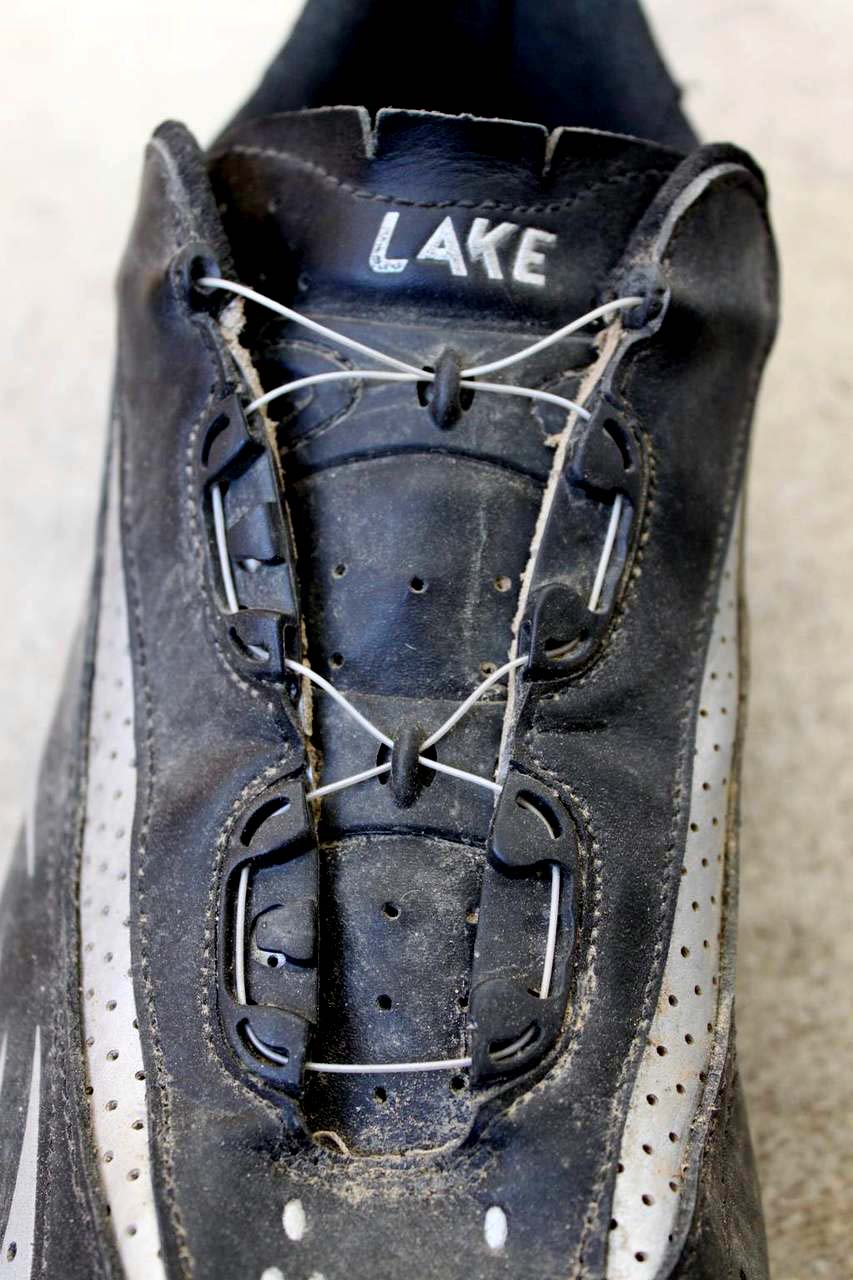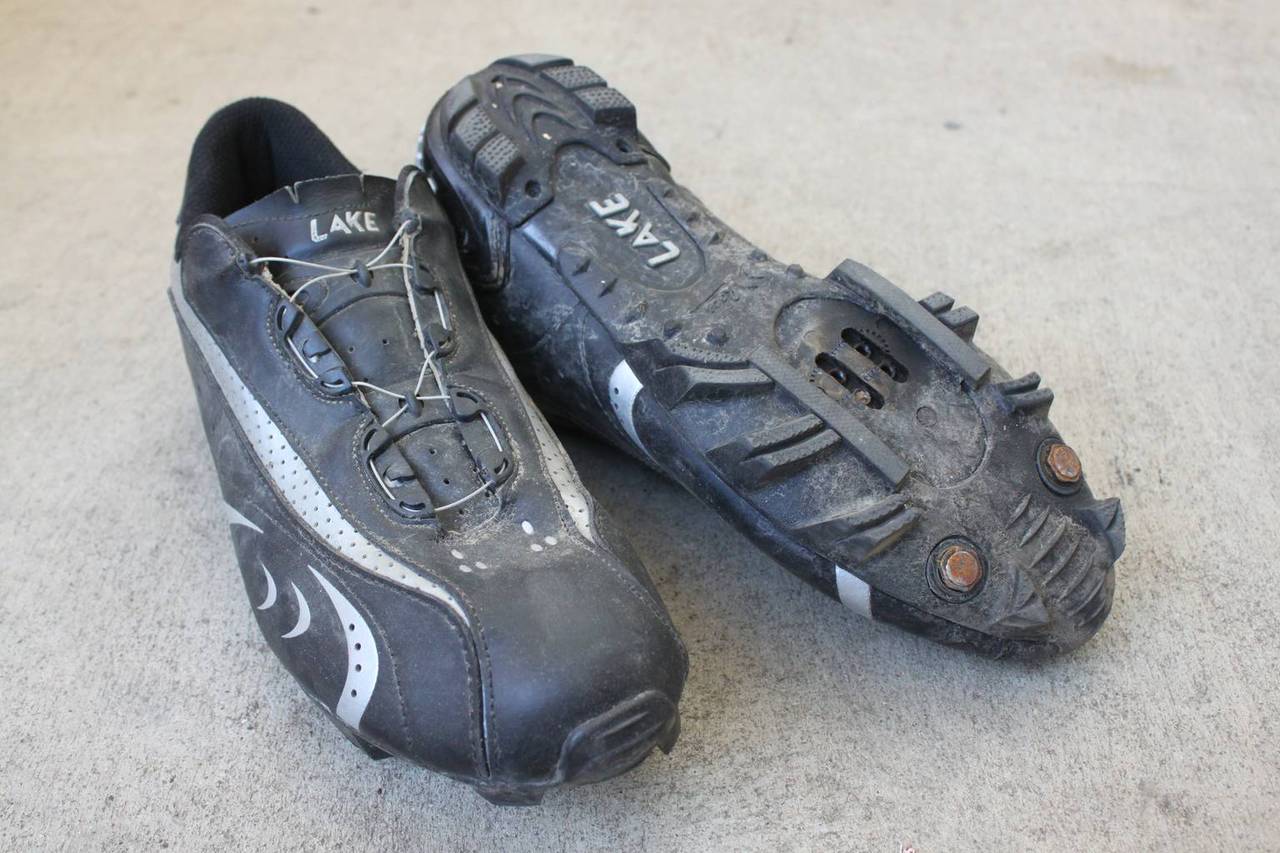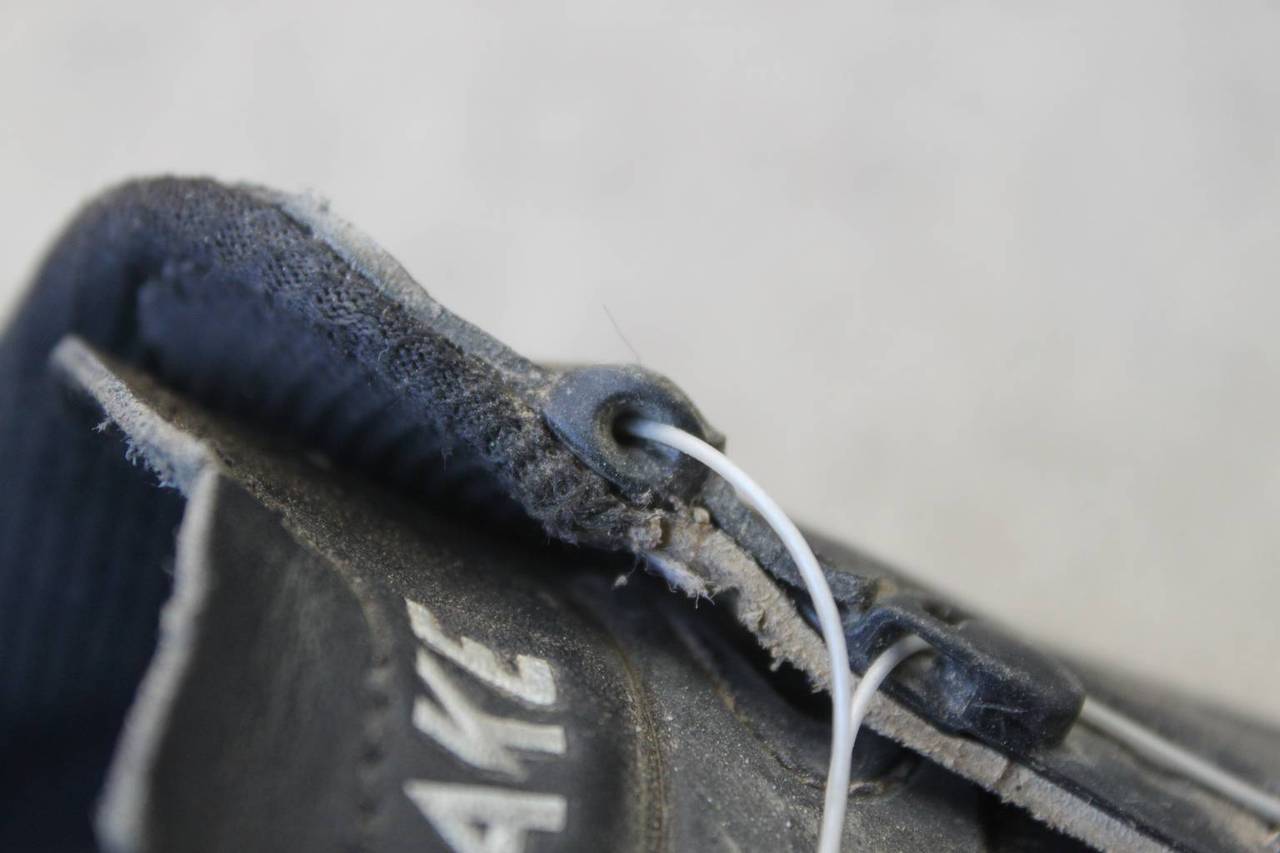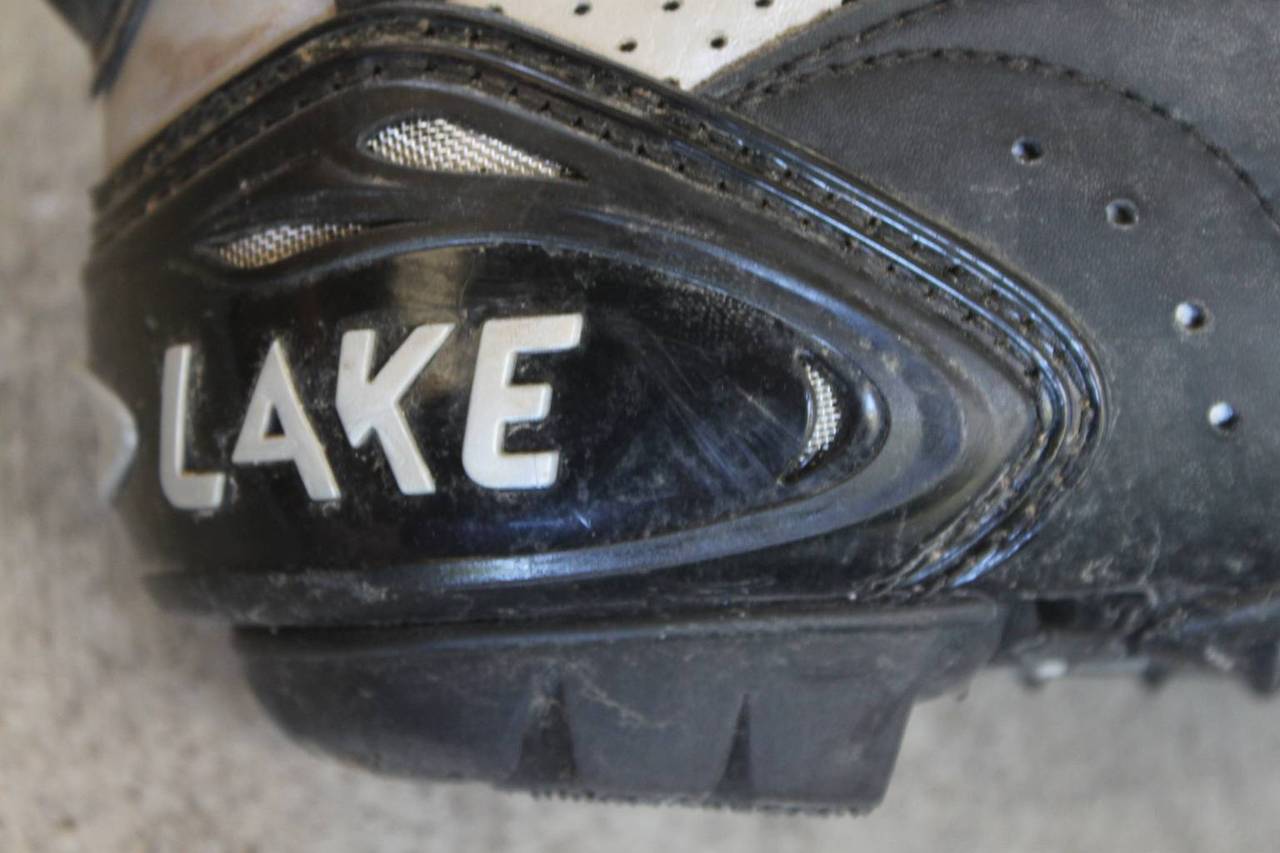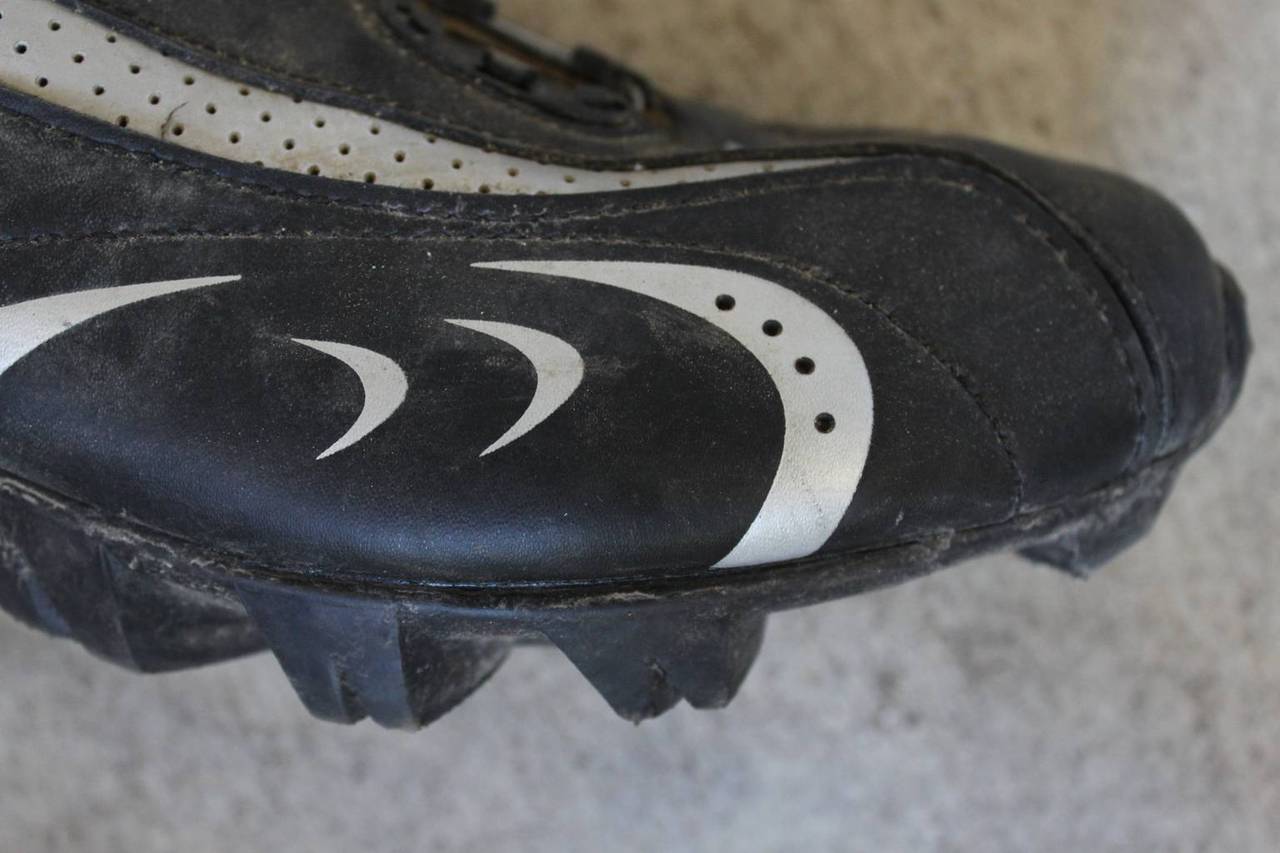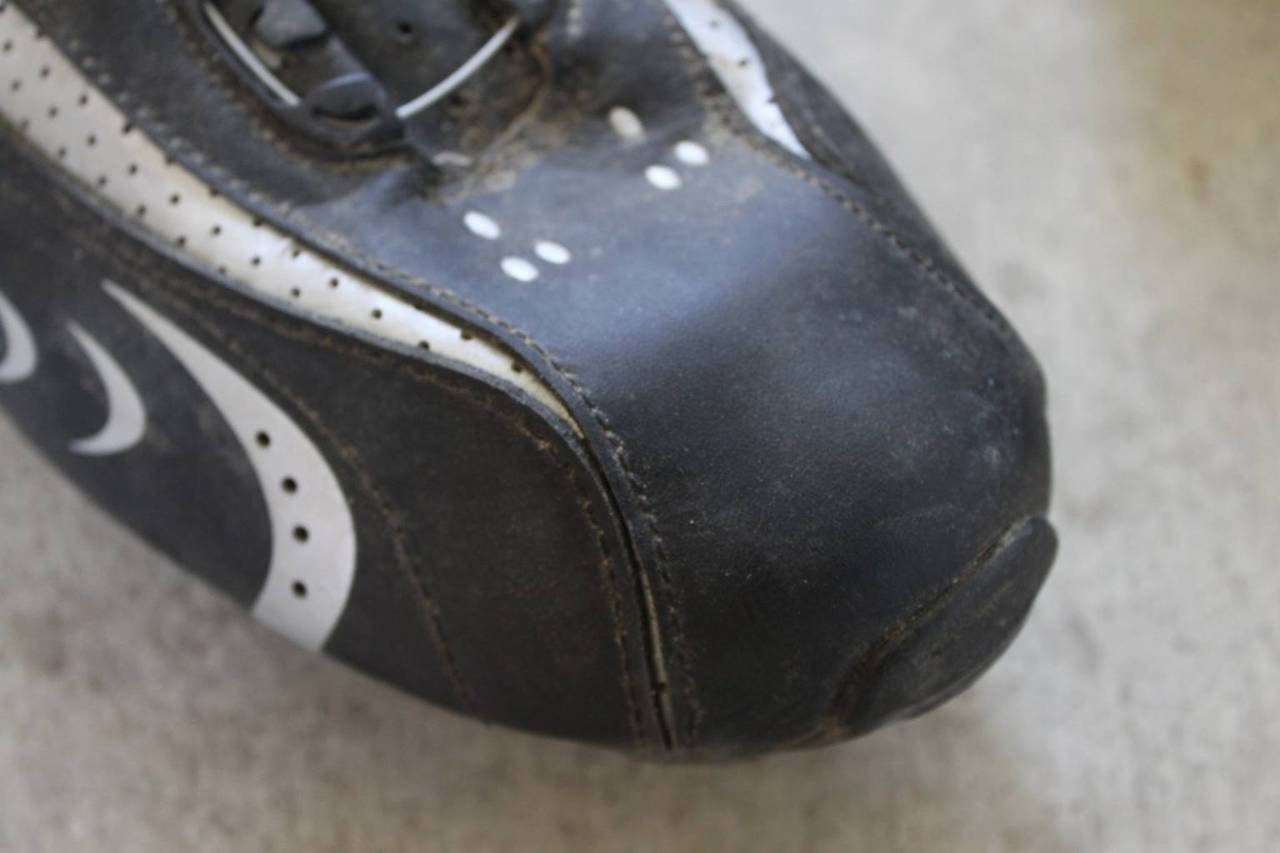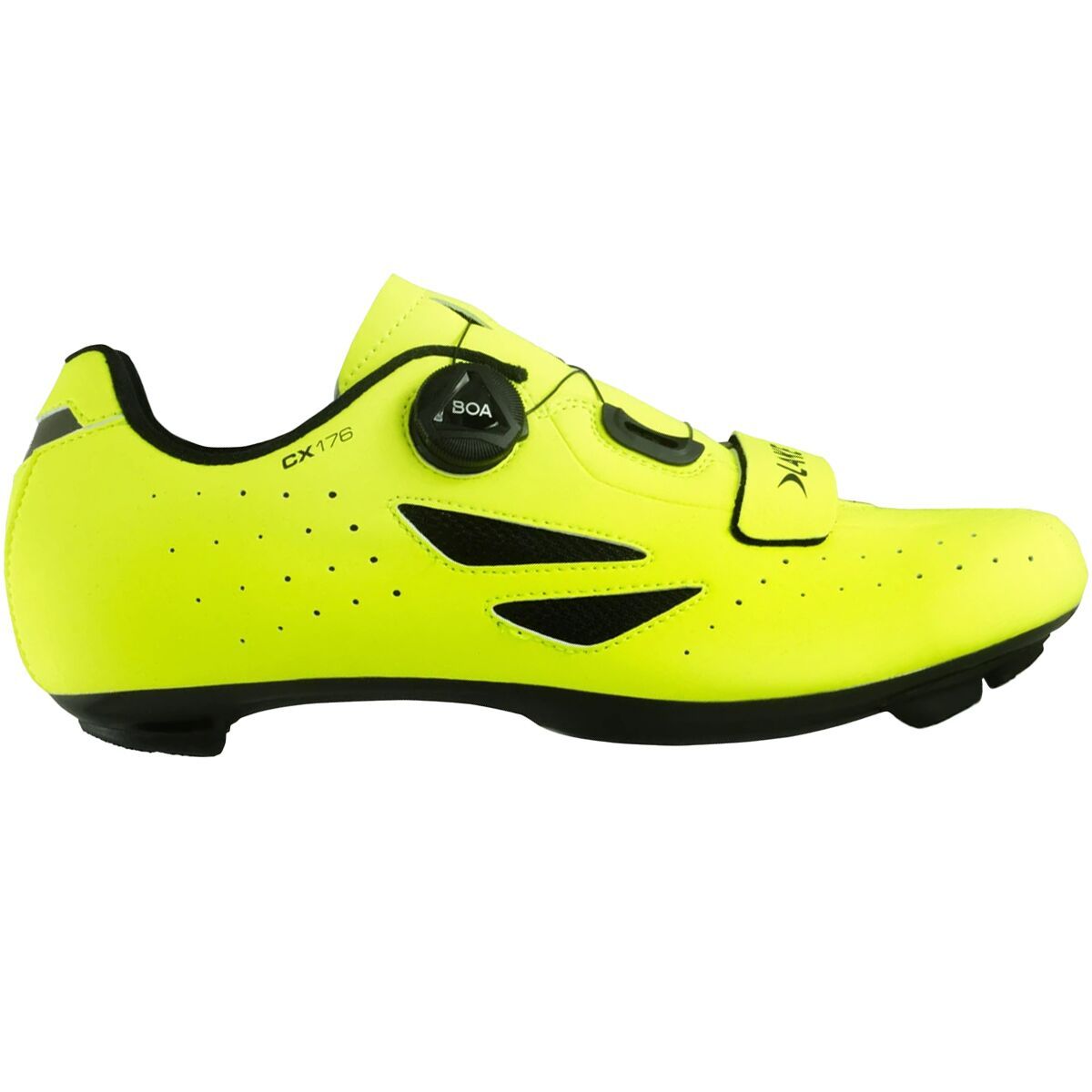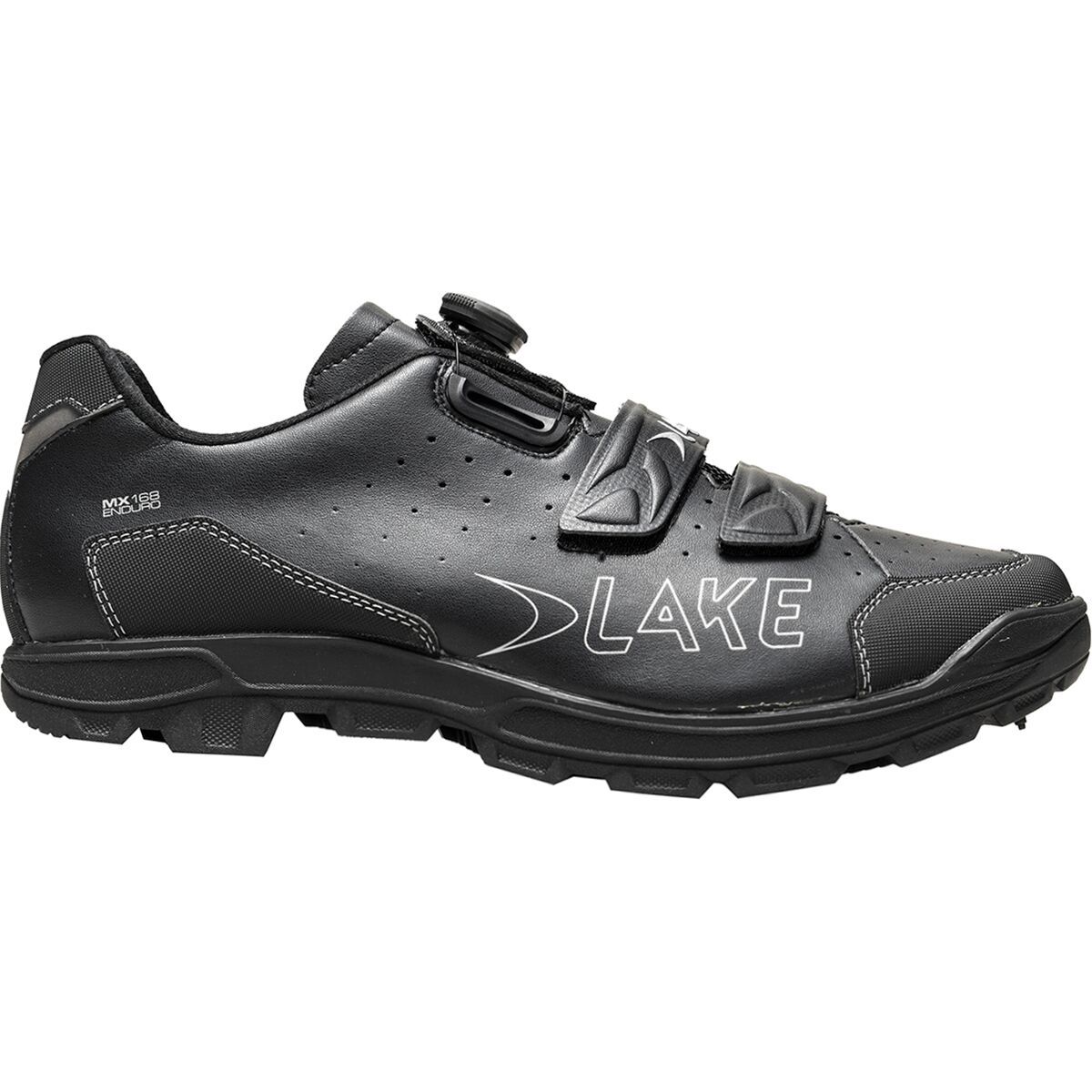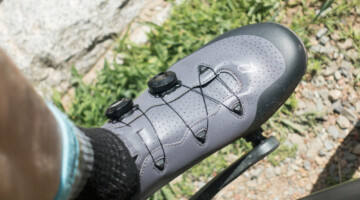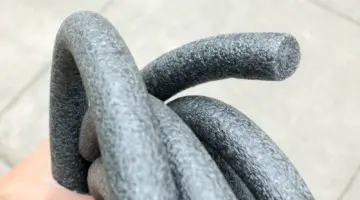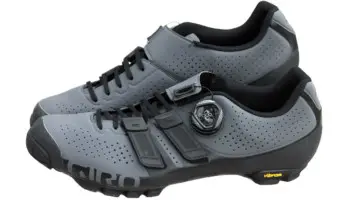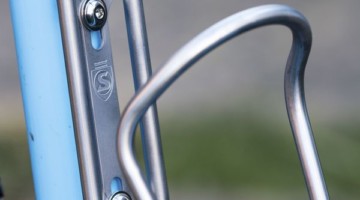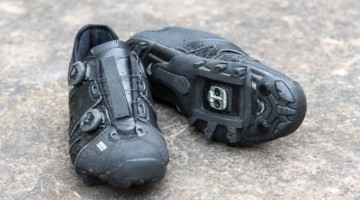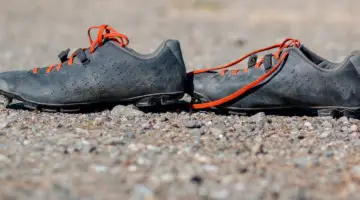Cyclocross Magazine’s year-long search for the perfect cyclocross shoe continues with Day 3 of Shoe Week. Today we take a look at Lake’s MX170 shoe. Missed our previous features? See our reviews from Day 1, Day 2 and Day 3.
by Andrew Yee
I’ve been a longtime Lake shoe fan, since their shoes sported Shimano-made soles and came with aqua-colored accents. One particular reason that I’ve liked Lake shoes is that the company offers models like the mid-range MX160 and MX165 with laces, allowing a custom, secure fit on my two different-shaped feet.
Huh? Laces on cycling shoes? Don’t worry, I don’t long for Detto Pietros, but I’m not a triathlete and have no need to get in and out of my shoes in a hurry. If laces work for every other shoe I have, why not for cycling? Yet one area I don’t like laces is for snowboarding. Trying to tighten laces on a big, burly stiff boot with bulky winter gloves isn’t easy. And so for my snowboard boots, the wire-based ratchet Boa system has been a godsend for me.
So when Lake combined a Boa system with their mountain bike shoe technology to create the mid-price MX170 mountain bike shoe, I couldn’t wait to try it. Described by Lake as a “lightweight race shoe,” with a lot of leather and not much mesh, a heel-mounted Boa lacing system, optional toe studs, two different widths and an aggressive, natural rubber sole all at $149, could the MX170 be the perfect cyclocross shoe?
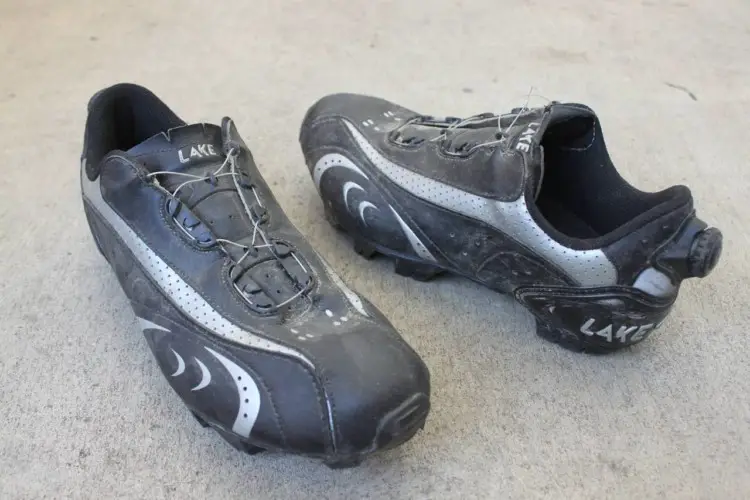
The Lake MX170 mountain biking / cyclocross shoe with Boa closure and adjustment © Cyclocross Magazine
The MX170 mountain bike shoes, with a unique subdued black and silver color scheme, look more like soccer cleats than the modern, flashy European cycling shoe, and it’s a look that grew on me. If I wanted my feet to draw attention I would have taken up dancing. At a quick glance, the shoe looks a lot like the silver and black high-end $290 MX330 that also has a heel-mounted Boa, but offers more mesh, a carbon fiber sole and weighs 60 grams less.
But more ventilation and a stiffer sole aren’t necessarily what you want in cyclocross, and if you can pay nearly half the price for more protection from the elements and the same lacing system, why not buy two to always have a dry pair for the back-to-back muddy weekends?
Crank It Up!
After slipping my foot into the MX170, I quickly noticed two things. First, they seemed roomier than my old MX165 shoes, something most people with more normal-volume feet may appreciate. Also, the Boa system at the heel was very easy to adjust. Push in the dial, crank away and soon the shoe fits like a glove. And, unlike the Boa system on my snowboard boots, when I pulled the dial out, I didn’t instantly lose all tension in the shoe. This is obviously helpful for adjustments while on the bike – it loosened up a bit, but there was enough friction in the system to keep the shoe from opening up completely and I could crank it back down as needed. Cranked down nearly all the way, I could get a decent fit with my low-volume feet, and it accommodated my high arch and flat foot equally well.
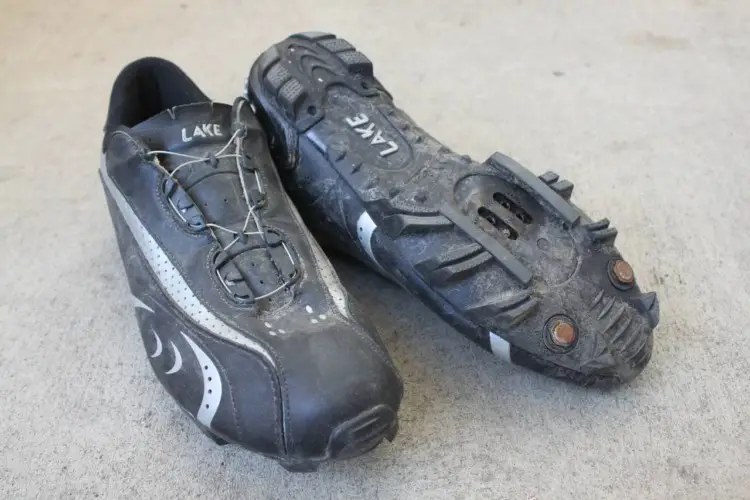
The Lake MX170 look a bit like soccer cleats, and with studs, can be equally as grippy on the run-ups. Lake MX170 cyclocross shoe. © Cyclocross Magazine
The heel mounted dial seemed like a peculiar position for the Boa dial though. If you use the toe of one shoe to remove the other shoe via the heel, the dial gets in the way. It’s also readily available for your competitors to accidentally step on, potentially opening up the laces. I was able to do this myself as a test, but in actual use, my fears weren’t realized – the dial is quite small and it’s not like I have a big target on my back at the races. Plus, it’s a good position for the dial for step-through dismounters – no chance to catch the dial on the crank like if it’s on the outside edge of the shoe (as it is on the company’s top-shelf, $489 MX401).
Adjustments while riding or racing are simple. The Boa dial is easy to reach while pedaling; you have to bend over just a little less than with a traditional buckle (if you lift your heel at the top of the pedal stroke).
Earning the Boa Constrictor Name
The MX170 handled the late summer warm and dry cyclocross training rides well. On run-ups, the super-open tread provided decent grip, especially with the toe-stud like rubber lugs at the toe. Despite all the leather, my feet never overheated. On the occasional longer group road ride, it was easy to make mid-ride adjustments as the shoe loosened a bit or my feet expanded. While pedaling, the stiff sole felt efficient and, when paired with small pedals like the EggBeater, they were plenty stiff to avoid hot spots. I did suffer from pressure spots from the wire lacing on the top of my foot on long rides, but this was not an issue in shorter, cyclocross-length rides. Still, it’d be nice if the tongue had a bit more padding and structure to avoid this problem.
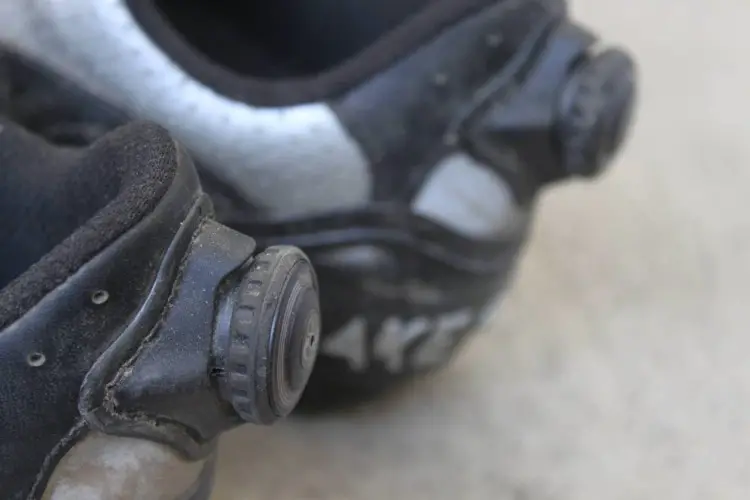
The rear-facing Boa on the MX170 keeps the look clean, but you can accidentally pop open the dial with your other foot, or your bike, with a clumsy dismount or run-up. © Cyclocross Magazine
But most snakes like hot, dry weather and hate the wet, cold conditions of ‘cross. Would the Boa-equipped shoe be any different? Unfortunately not. While the open, natural rubber sole provided plenty of grip and didn’t pack with mud and the leather uppers kept my feet warmer and dryer than most racing mountain bike shoes, the tiny openings for the wire lacing were easily contaminated. A single ride in the wet slimy mud of British Columbia shut this shoe down, almost literally. After a day of riding I couldn’t open the lacing system or get one shoe off. Only after minutes of prying (and nearly crying) did the Boa release its catch…
After this ride, I had hoped that my problems were just a fluke but, after a few more rides, the other shoe’s Boa lacing started to become similarly sticky and it became a struggle to get that foot out.
Having once lost a shoe in a mud pit while racing ‘cross, I can appreciate the boa constrictor-like grip the MX170 offers, but just wished it ended once I was done riding. Despite my poor experience with this shoe, I still am a fan of both Lake Cycling shoes and the Boa system. I doubt I’ll ever use a snowboard boot without the Boa and would try it on a road cycling shoe in a second, but when cyclocross season arrives, the Boa should be off in hibernation.
Lake MX 170 Mountain Bike Race Shoe:
MSRP: $149
Sizing: 39-50, half sizes from 39.5 to 46.5, in Normal and Wide widths
Weight: 898 grams per pair, size 46
Colors: Black with silver
More info: Lake Cycling
Photo Gallery:













